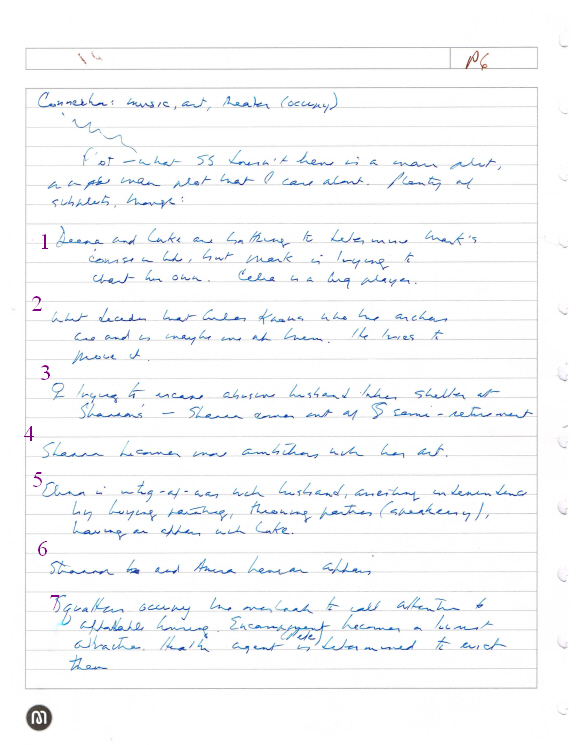While procrastinating thinking about doing research on plot the other day, I came upon the Writers’ Workshop website. They’re in Oxford, England. They offer a variety of editorial services for pay. There’s also a lot of great free stuff on their website. I landed on this particular page.
Under the heading “What Does a Perfect Plot Look Like?” it outlines the plot and subplots of Jane Austen’s Pride and Prejudice. (They spelled Lizzie Bennet’s surname with two t‘s — Jane Austen didn’t — but let this be a lesson to you: solid work can survive one copyeditorial goof, or even two or three.)
Squatters’ Speakeasy, the novel I set aside, is all sprawl and no momentum. It’s the ocean with no trace of a Gulf Stream. I took out my Squatters notebook, grabbed a pen, and tried to outline its plot.

Subplots
What I discovered was that Squatters’ Speakeasy has no fewer than seven subplots but no sign of a main plot anywhere. It’s drowning in subplots. Maybe one of the subplots is really the main plot, but at the moment none of them is jumping up and down and yelling “Me, me, me!”
Wolfie, in marked contrast, has three plot threads going, and I’m engrossed in all of them:
- Shannon tries to find a new home for a dog in trouble, assisted by Glory, an 11-year-old neighbor.
- Glory is being sexually abused by her stepfather.
- Glory’s biological father is using social media to make contact with her.
If you ask me what this book is about, I’ll rattle off something like “Shannon gets pulled into rescuing first a dog and then a girl, and the dog and the girl help rescue each other.” Ask me what Squatters’ Speakeasy is about and I’ll grab hold of one subplot and mumble for 10 minutes. What Squatters does have is plenty of raw material. It’s waiting for me to plot it into some kind of coherent structure.

Travvy looks for a plot